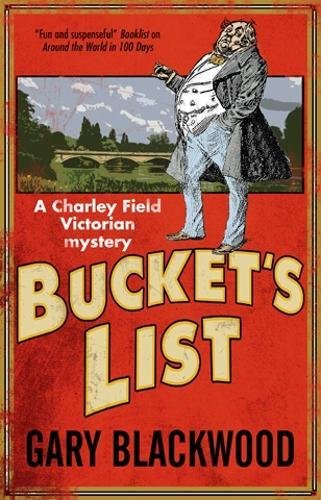Bucket’s List
It’s 1853 in London, and the true-life inspiration behind Charles Dickens’s Inspector Bucket, Charley Field, has just retired from the police force and started his own private investigation firm. But business is dismal until the death of his friend, a prostitute named Rosa. Her death is deemed a suicide but Charley doesn’t believe it, especially when her last client was one of his old foes, a murderer, who escaped death. As Charley works on solving the mystery of Rosa’s death, he investigates small, often frivolous-sounding jobs for various clients, such as Charles Dickens himself, a poor but heartbroken poet, and a beautiful but vindictive actress, while trying to avoid visiting his wife and her nasty mother.
Bucket’s List is driven by the character of Charley Field. He is down-to-earth, funny, and a smooth-talker who can finagle his way into any situation. He also has a big heart, which makes him a sucker for a sob story and willing to take on any job, however outlandish it may sound. But the main plot, solving Rosa’s murder, is thin and lacking in any urgency. It is sprinkled throughout the novel, sometimes appearing forgotten. The novel is bolstered by the various little crime-solving jobs Charley accepts, which are for the most part extraneous to the main plot, but some are eventually woven in. Some subplots, such as who killed the actress’s lover, may have been introduced to set the stage for future novels in the series.
Charley and the cast of interesting secondary characters, such as his wife Jane and Constable Mull, make the novel entertaining to read. Otherwise, Bucket’s List is just that: a list of random crimes to be solved until Charley has all the evidence to solve the overriding one.










